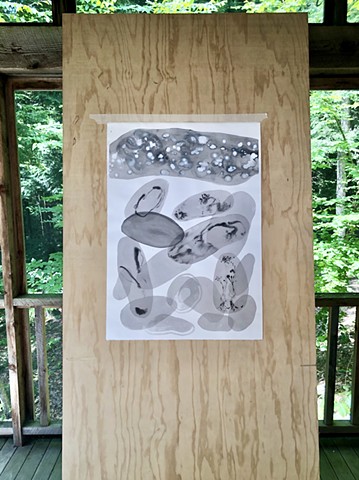COVID-19
How we read images, especially abstract ones, has so much to do with context: the artist’s, the viewer’s, that of the artwork itself. Since early on in the pandemic, Autumn Ahn has been making ink drawings out of a woodland studio in western Massachusetts. I have been writing reviews from a house in the mountains of northern Vermont. Ahn’s grayscale studies, sent to me via email, appear in photographs taped to a tall wood panel with a background of sun-dappled greenery. I don’t know what I would see if this were all taking place in a white-walled gallery, but under the current circumstances my awareness is of glittering spiderwebs, tracked foot- and pawprints, infinite stars above, frog spawn, tight pinecones and finely feathered wings, the jellied loops of salamander eggs, and stones—so many stones, picked up in the riverbed, tucked in pockets, stacked in place, infinitely findable and manifold. It is to Ahn’s great credit that looking at her drawings close up is as rewarding, as full of surprises and variances, as is studying the natural objects themselves.
—Lori Waxman 2020-07-28 9:31 AM
